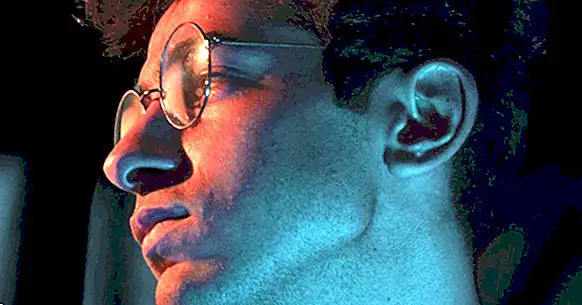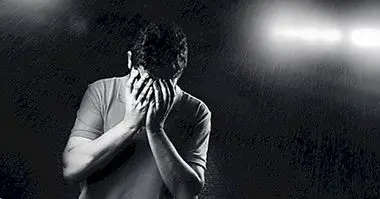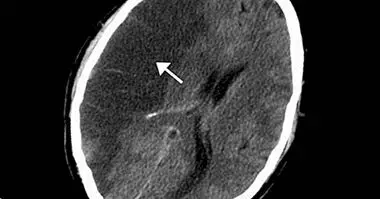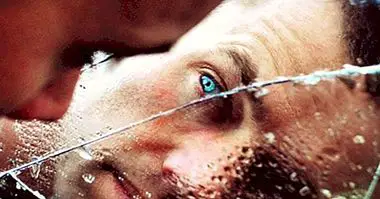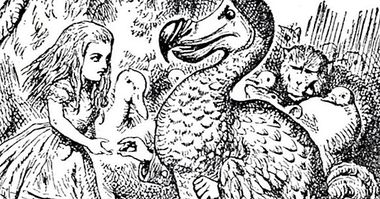The relationship between creativity and depression
On more than one occasion we have heard about the close link between creativity (and even genius) and psychopathology. Many great exponents of different arts such as painting, literature or poetry have been known to manifest symptoms of different psychiatric disorders.
When we talk about arts such as painting or sculpture, reference is usually made to the suffering of manic pictures or psychotic outbreaks, in which there is a break with reality (said rupture being the one that facilitates the creation of something new). . But also depression has been associated with creativity and to great works. That is why in this article we are going to talk about the relationship between creativity and depression, a relationship that is not often talked about as often as with other pathologies.
- Related article: "Are there several types of depression?"
What is depression?
Before going directly to talk about the relationship between creativity and depression, it may be useful to briefly review the concepts we are talking about.
It is understood as major depression to a mental disorder or psychopathology characterized by the presence of a sad mood and / or anhedonia or difficulty to feel pleasure or satisfaction during most of the time during at least two weeks, together with other symptoms such as sleep disturbances (being able to have insomnia and nocturnal awakenings or hypersomnia) and of the appetite (generally causing a loss of this), mental retardation or bradypsychia, agitation or psychomotor retardation, fatigue, feelings of worthlessness, hopelessness and possible thoughts of death and suicide (although not all of these symptoms are necessary).
It is a disorder that generates a high level of suffering, in which there are cognitive biases that in turn cause the existence of a cognitive triad; Thoughts about yourself, the negative and hopeless world and future and in which there is a high negative affectivity and a low positive affectivity and energy. It has serious effects in the way of seeing the world, and usually generates a great limitation in the different vital areas.
The person is usually focused on their depressive thoughts, lose the desire and motivation to act, lose concentration, and tends to isolate (although initially the environment becomes protective and pays more attention to the subject, in the long run a tiredness of the situation and a progressive distancing).
- Maybe you're interested: "The psychology of creativity and creative thinking"
And creativity?
With regard to creativity, this is understood as the ability to develop new ways and options to do things , generate new strategies to reach a purpose. It requires different skills, such as memory and divergent thinking ability. Especially, it requires imagination to make a link between reality and the elements to create. At the artistic level, one of the most recognized forms of creativity considered pure, also requires introspection and self-awareness, as well as a great sensitivity to capture emotions. It is also related to intuition.
Art has also been related, often, to suffering. This makes the subject reflect and deepen what it is, how it feels and how the world feels. Authors such as Freud relate the creativity of the artist with childhood pathologies and traumas , being a way to open up to conflicts and to the desires and fantasies present in the unconscious.
The relationship between creativity and depression
The link between depression and creativity is not something recent: since antiquity, Aristotle proposed that philosophers, poets and artists often have a melancholic character.
This idea has been evolving and persisting throughout history, finding that some great thinkers, philosophers, inventors and artists had characteristics of depressed subjects with mood disorders (including also bipolar disorder). Dickens, Tennessee Williams or Hemingway are, among many others, examples of this. And not only in the world of art, but also in science (Marie Curie being an example of this).
But this relationship is not based only on the assumption or concrete examples: there have been multiple scientific studies that sought to assess this relationship. The data of a large number of these studies analyzed in the meta-analysis conducted by Taylor from which this article departs, shows that there is indeed a relationship between both concepts.
Two visions of this relationship
The truth is that if we analyze the symptoms present in a large part of the depressions (lack of desire, anhedonia, psychic and motor slowness ...), the relationship between depression and creativity (which involves a certain level of mental activation and the fact of creating) It may seem strange and counterintuitive. But, in turn, we have to think that it implies a focus on what one thinks and feels (although these thoughts are negative), as well as to look at details of what disturbs us. Likewise, it is usual for creative works to be performed in a moment of recovery or return to normal functioning after going through an episode.
However, the existence of this relationship has a double reading: it is possible that the person with depression sees their creativity enhanced, or that creative people tend to suffer from depression.
The truth is that the data does not support the first of the options to a large extent. People with major depression showed in different essays a greater creativity in aspects such as painting (curiously, artistic creativity is the most associated with this type of disorder). However, the differences were relatively modest and in many cases were not considered statistically significant.
With regard to the second of the options, namely the fact that Creative people tend to have a higher level of depression , the results are much clearer and more evident: they reflect that there is a moderate to high relationship between depression and creativity (although apparently the relationship is greater with bipolar disorder). People with a higher level of sensitivity, including the artistic sensibility that is often associated with creativity, are prone to depression. They tend to feel emotions more intensely and to focus more on the details, being more affected in general by events and thoughts.
Of course, this relationship occurs with major depressive disorders, which appear depressive episodes that eventually overcome (although they may reappear in the future). Disorders such as dysthymia, in which there is no depressive episode itself that ends up being overcome, are not related to greater creativity. A possible reason for this is the fact that the condition of a mood disorder facilitates introspection and focusing on how we feel and interpret the world , something that other people do not usually consider to the same extent. And these reflections can be expressed in different types of works, such as literature, poetry or painting, awakening creativity.
The Sylvia Plath effect
This link between mental illness and creativity, especially in the field of poetry. It has been found, in the study of different authors throughout history, that on average people who dedicate themselves to poetry (and especially women) tend to die younger, often because of suicide . In fact, the percentage of suicides went from 1% to 17%. This was baptized by Dr. James Kauffman as Sylvia Plath effect or Plath effect.
The name in question comes from a famous poet, who suffered from depression (although today it is speculated that he could suffer from a bipolar disorder), which ended up committing suicide at thirty years of age after several attempts throughout his life and in whose works can often be seen reflections linked to death.
Bibliographic references:
- Taylor, C.L. (2017). Creativity and Mood Disorder: A Systematic Review and Meta-Analysis. Perspectives on Psychological Science. 12 (6): 1040-1076. New York
- Kaufman, J.C. (2001). The Sylvia Plath Effect: Mental Illness in Eminent Creative Writers. J Creative Behavior, 35: 37-50.

